ABSTRACTION: Visually you could develop a set of images based on imagery that explore abstraction using photographic techniques, such as macro/ close-up photography, blur/ distortion experimenting with slow shutter-speeds/ ICM (intentional camera movement) or deliberate ‘out of focus’ techniques. Other techniques, such as Hockney ‘joiners’, panoramics or any form of photo-collaging/ montaging can be explored both in-camera and in post-production. Typologies of plant studies or found objects on the beach could also be explored – see work by Karl Blosfeldt, Mandy Barker, or Penelope Umbrico.
ABSTRACTION: INSPIRATIONS / IDEAS / VISUAL STIMULA / ARTISTS CASE STUDIES
Slow shutter speed water experiments:
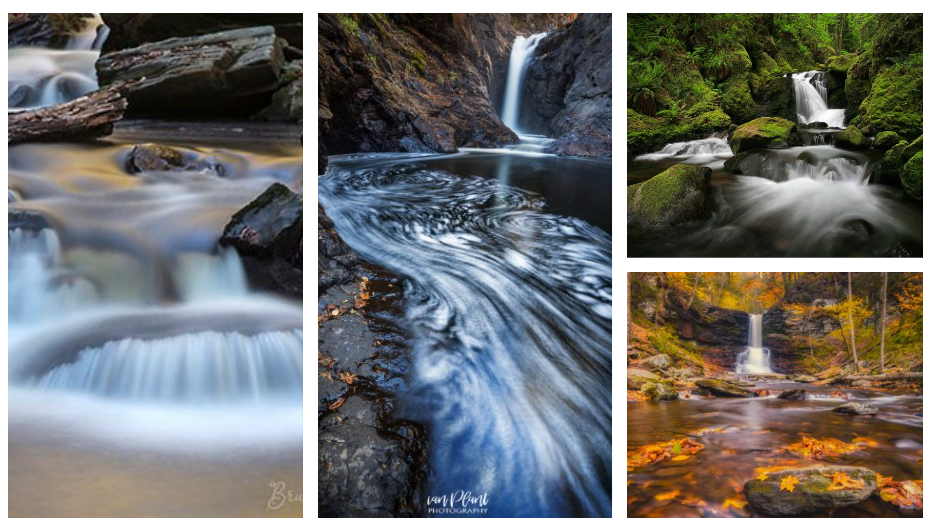
You can achieve this using IPhone’s ‘Live’ setting:
- Turn on live photo
- Hold the camera still to take the photo or rest it on something
- Take the photo
- Then go back into the photo and edit the live setting to ‘Long exposure’
Abstract landscapes – Combine slow shutter speed with intentional camera movement to create landscapes in motion

Low perspectives
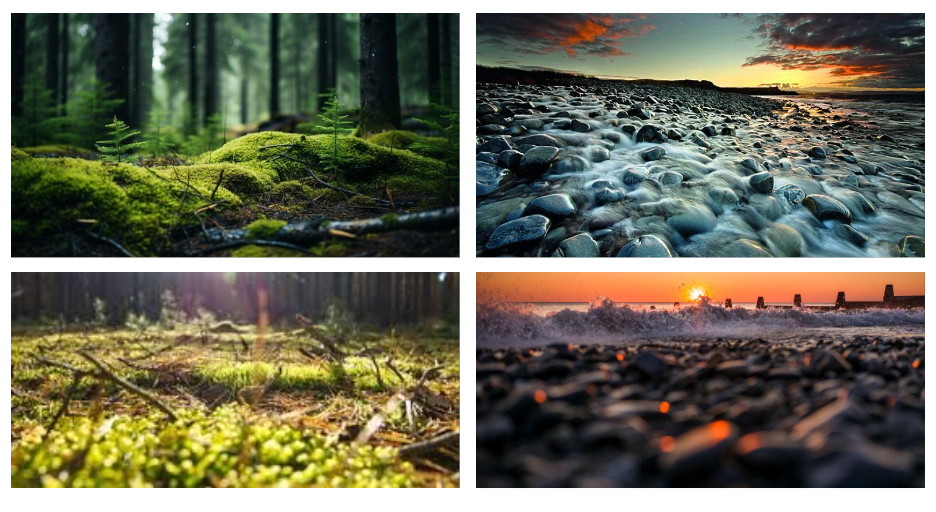
Agricultural lines
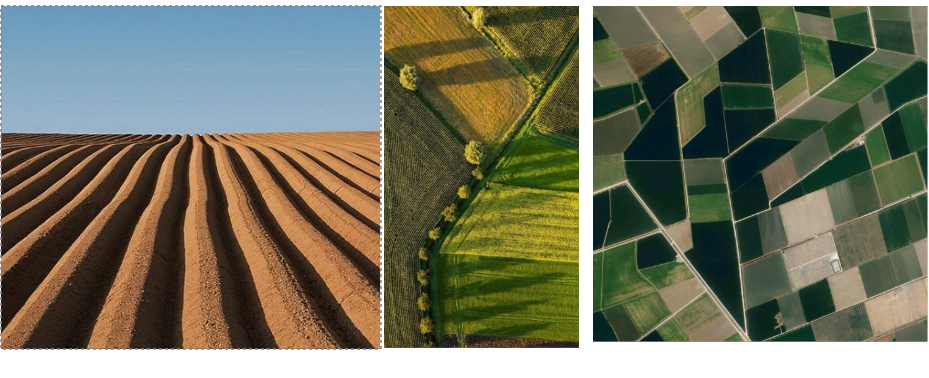
High Contrast, tonal photos.
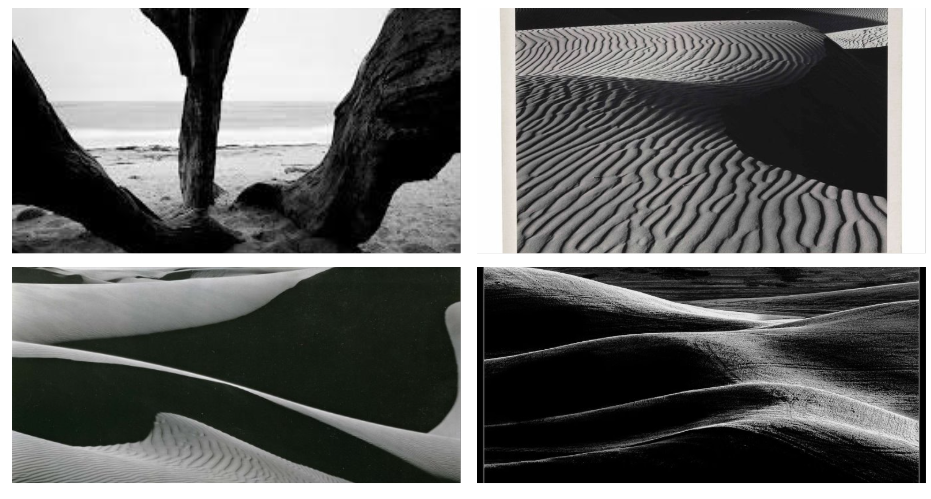
Landscapes in Reflections
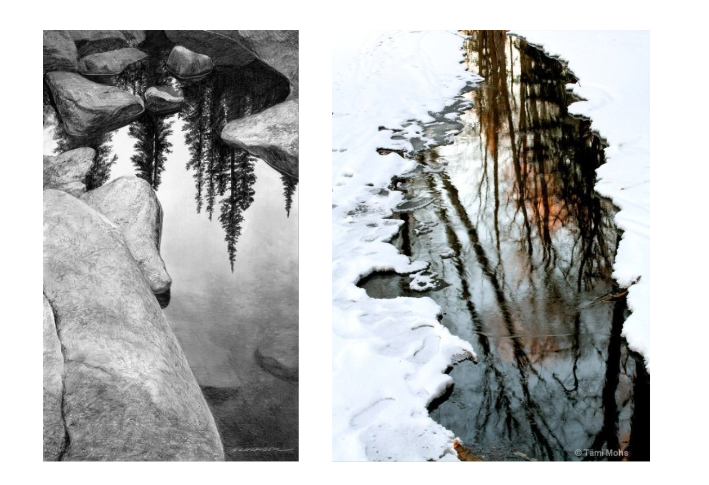
Double layered / Double Exposure landscapes
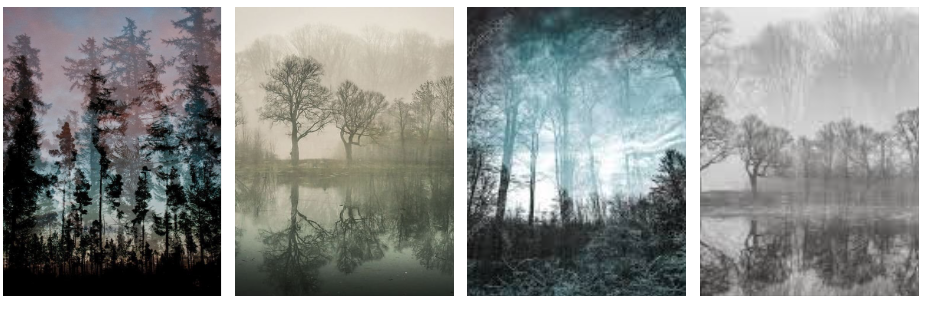
A tutorial on how to edit like like the images below can be found here
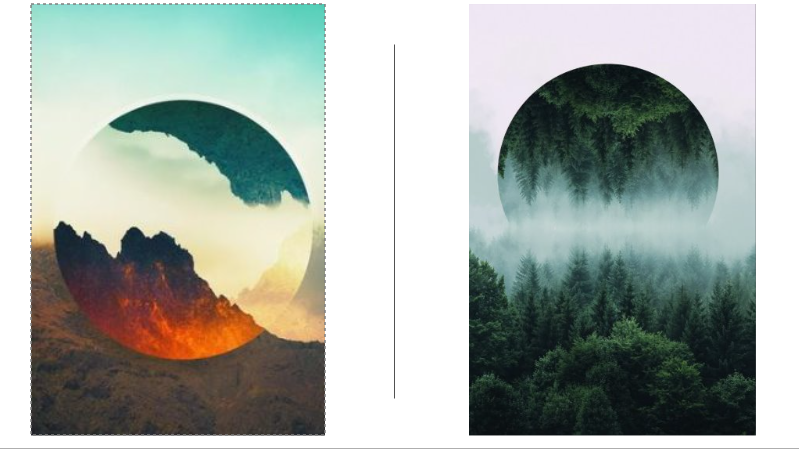
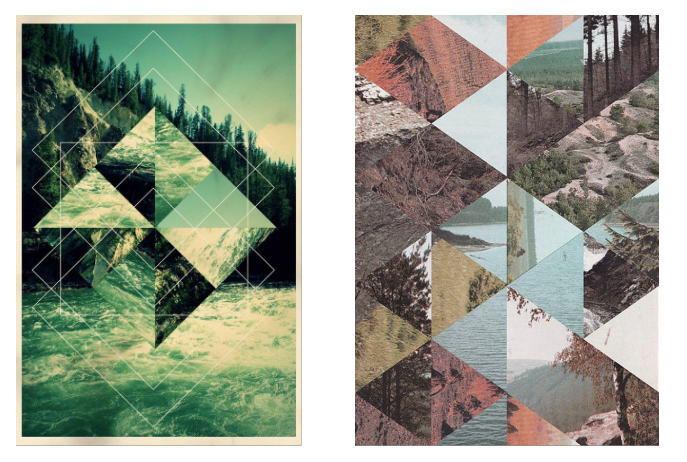
A tutorial on how to edit like Jelle Martens can be found here
Edits like Guy Catling
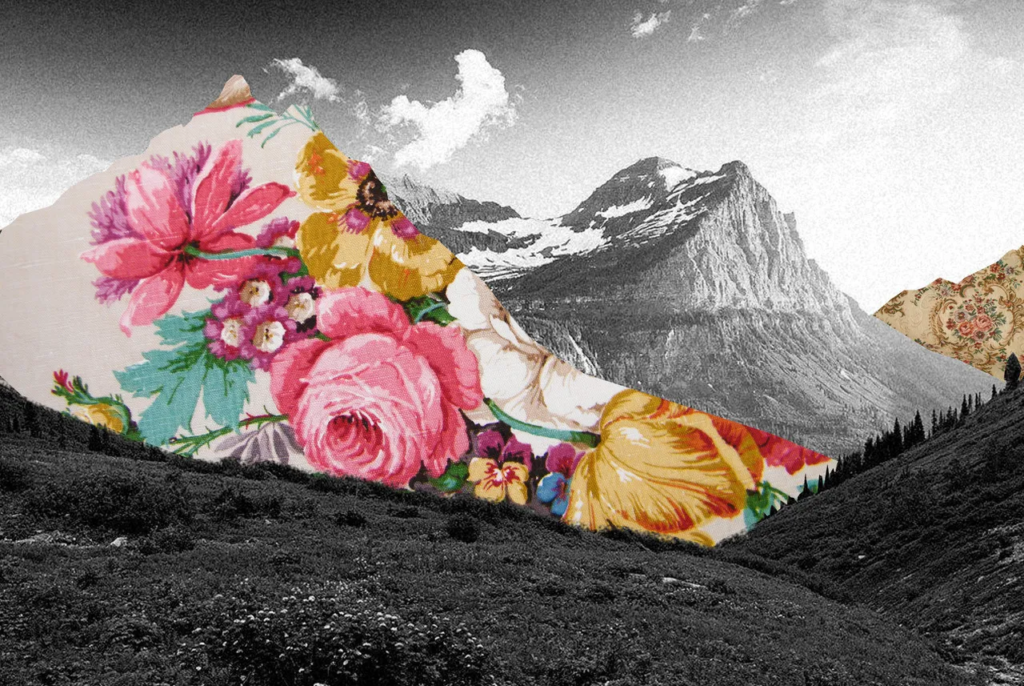
Zander Olsen – from the Tree, Line series, 2011


Meghann Riepenhoff – from the Littoral Drift series, 2015

Bruno V. Roels – Looking fr Paradise (from Fake Billboards), 2018

Vanessa March – Untitled No. 72, from The Sun Beneath the Sky series, 2018

David Hockney and ‘joiners’



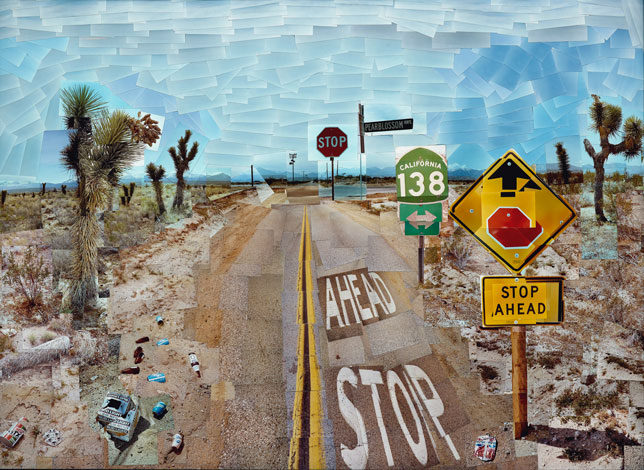
Pearblossom Highway is a piece of art created by the British artist David Hockney. It depicts a view of an American Highway. It is a collage compiled from over 700 separate photographs.
The artist himself describes his work as a drawing as opposed to a photographic piece. He has stated that this is because it is a layered composition representing many different viewpoints as opposed to a single, flat photograph. Read more here about Hockney’s Pearblossom.
TYPOLOGIES
Karl Blossfeldt: Art Forms of Nature

Karl Blossfeldt is best known for his precise photographs of plants; however, he began his career as a sculptor. Never formally trained in photography, Blossfeldt made many of his photographs with a camera that he altered to photograph plant surfaces with unprecedented magnification. His pictures achieved notoriety among the artistic avant-garde with the support of gallerist Karl Nierendorf, who mounted a solo show of the pictures paired with African sculptures at his gallery in 1926 and, subsequently, produced the first edition of Blossdeldt’s monograph Urformen der Kunst (Art forms in nature), in 1928. The clarity, precision, and apparent lack of mediation of his pictures, along with their presentation as analogues for essential forms in art and architecture, won him acclaim from the champions of New Vision photography. His work was a central feature of important exhibitions, including Fotografie der Gegenwart and Film und Foto, both in 1929.

Idris Khan: Drawing on diverse cultural sources including literature, history, art, music and religion, Khan has developed a unique narrative involving densely layered imagery that inhabits the space between abstraction and figuration and speaks to the themes of history, cumulative experience and the metaphysical collapse of time into single moments.
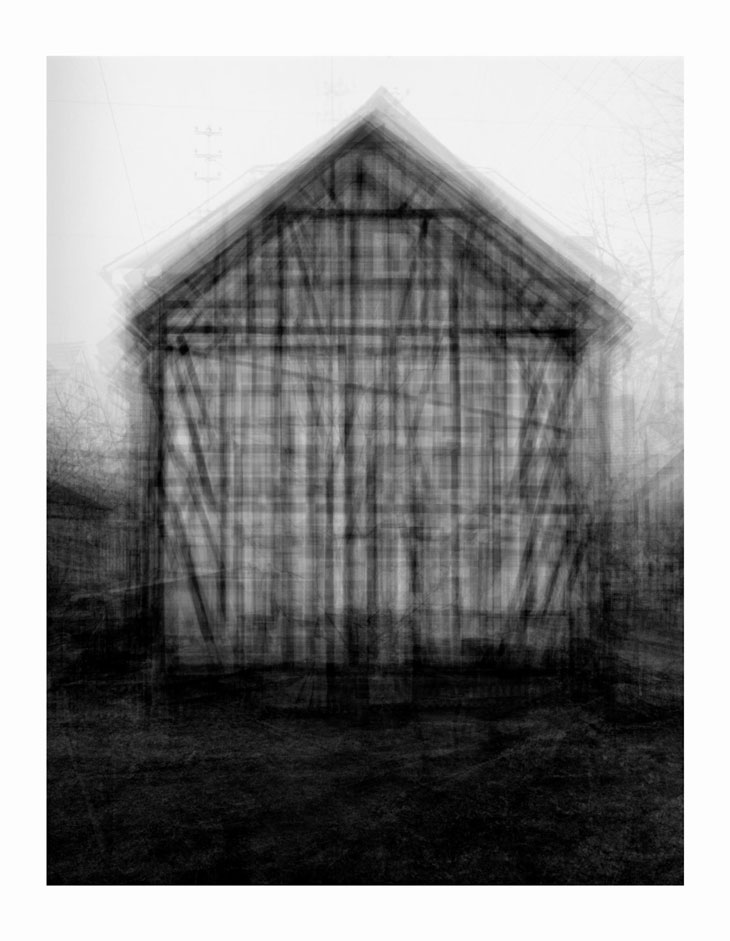
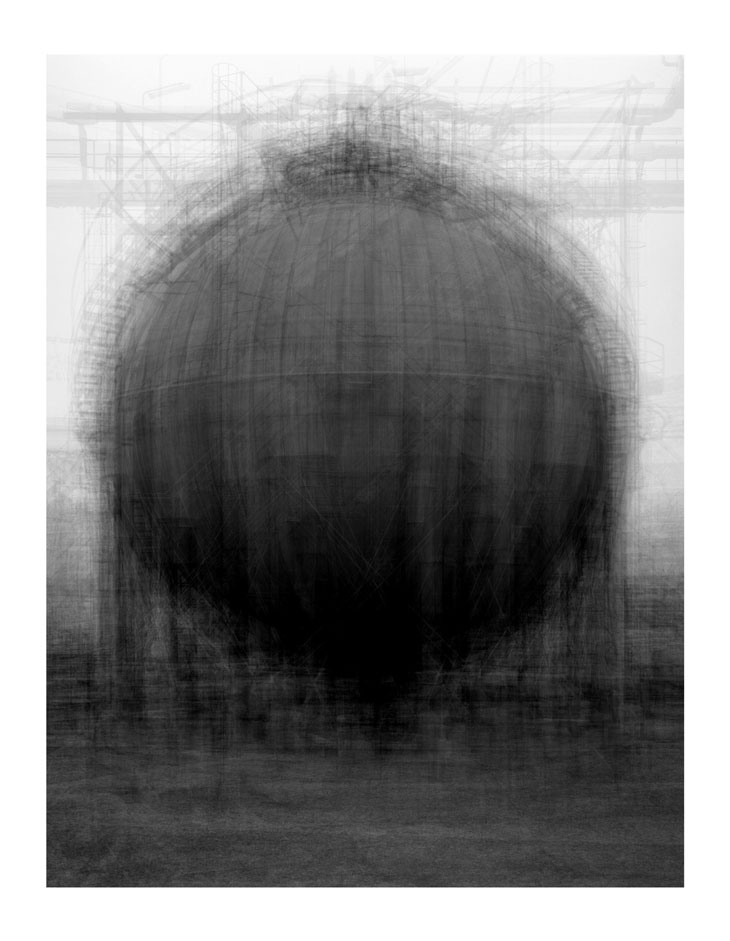

every… Bernd and Hilla Becher Prison Type Gasholder, 2004
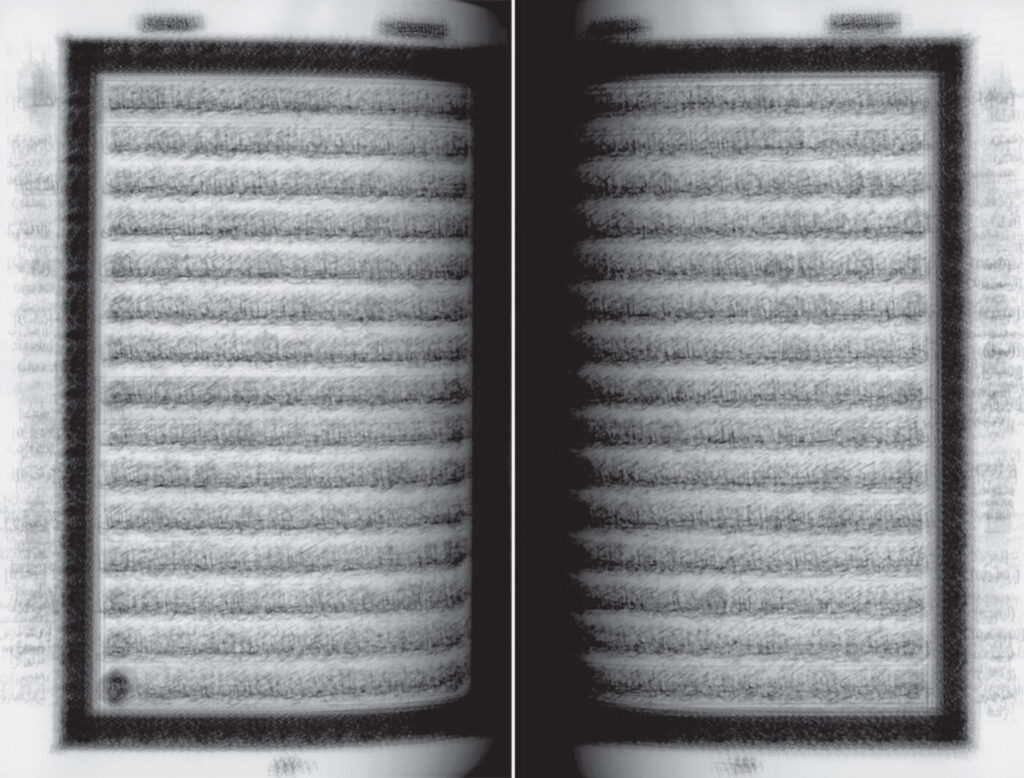
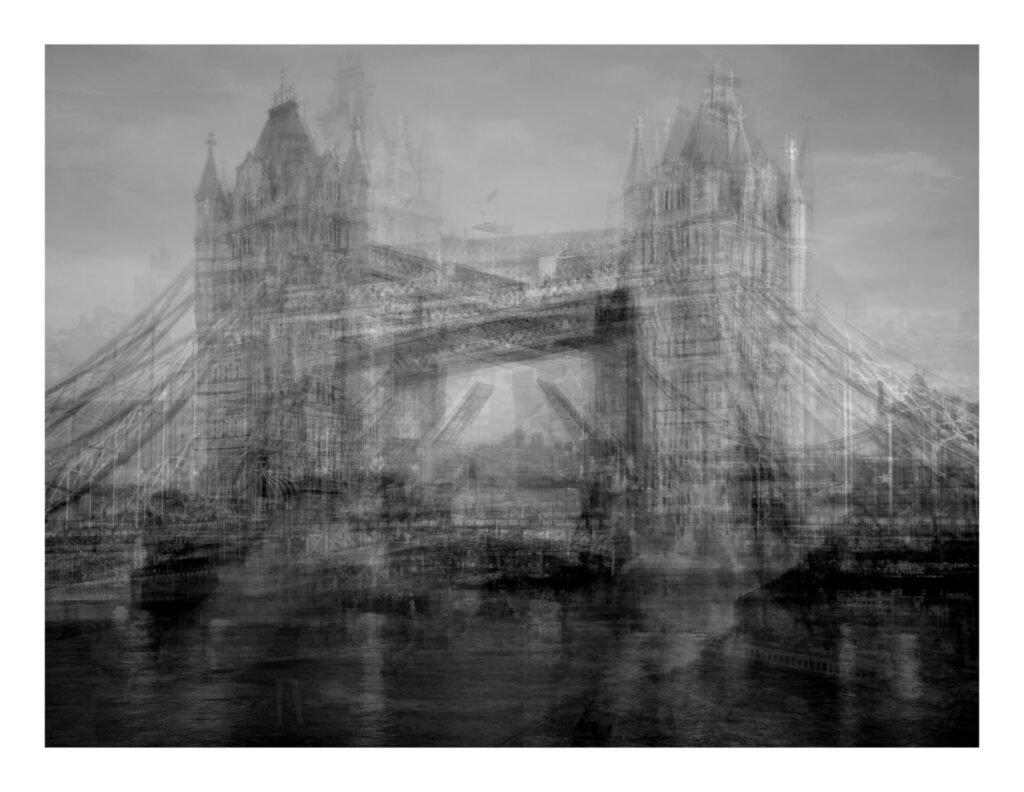
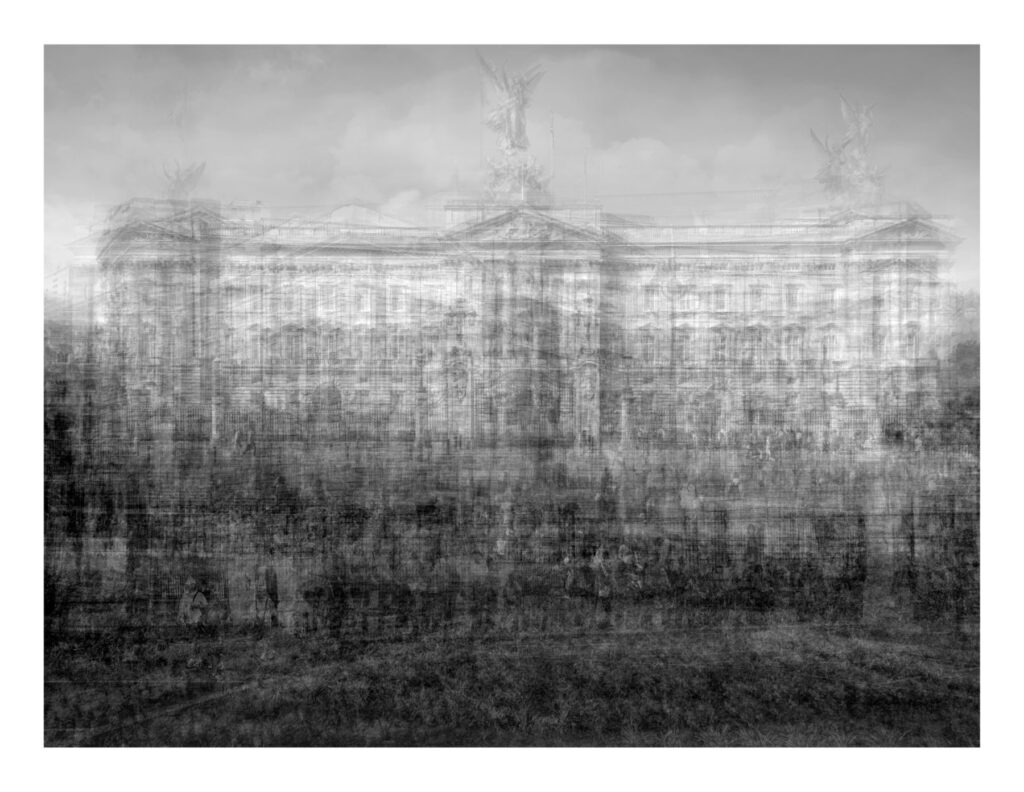
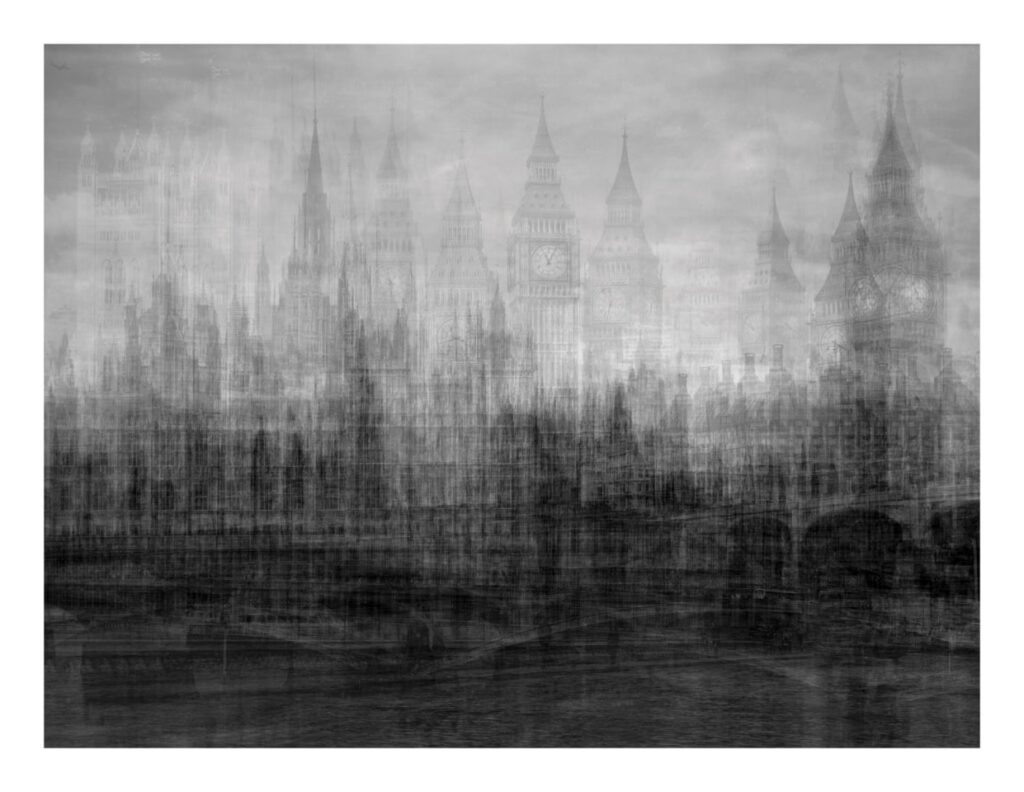
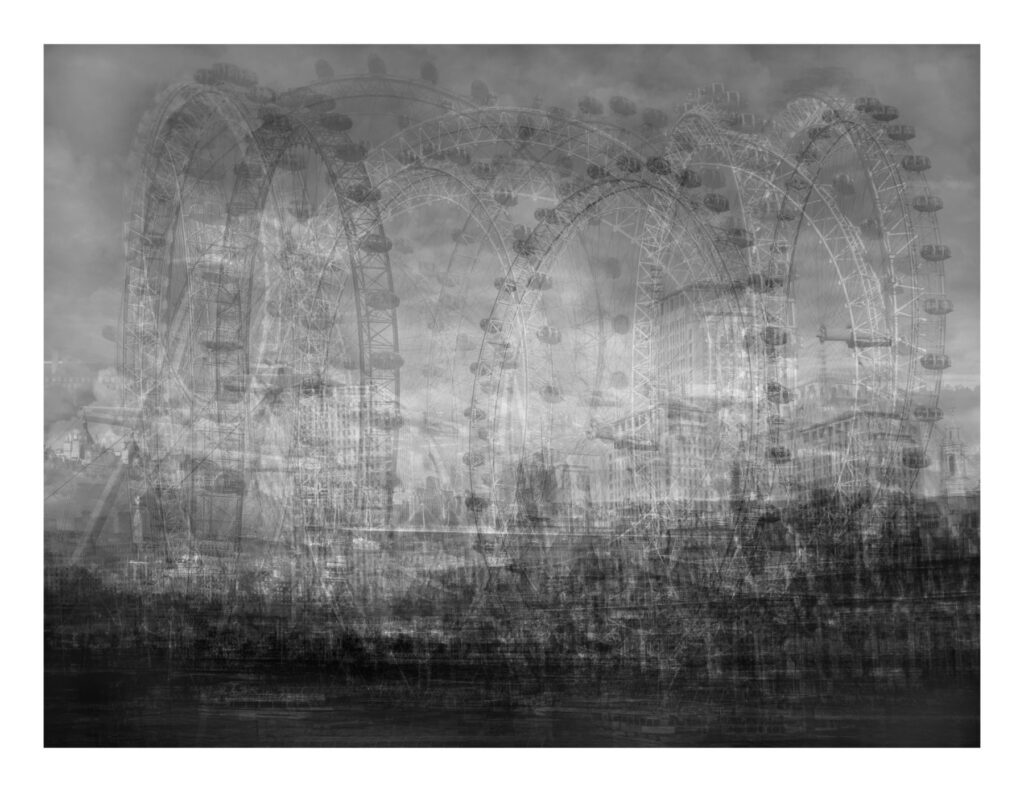
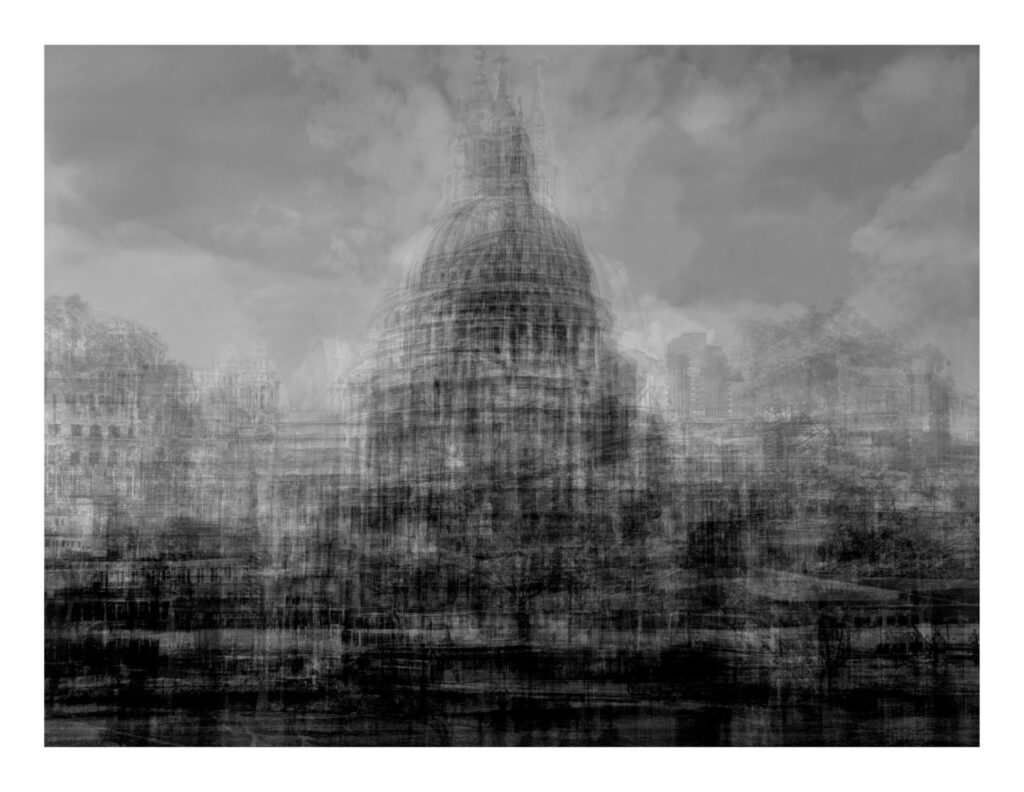
Read a review here of a recent exhibition, Seasons Turn: A Review of “Idris Khan: Repeat After Me” at Milwaukee Art Museum.
Penelope Umbrico
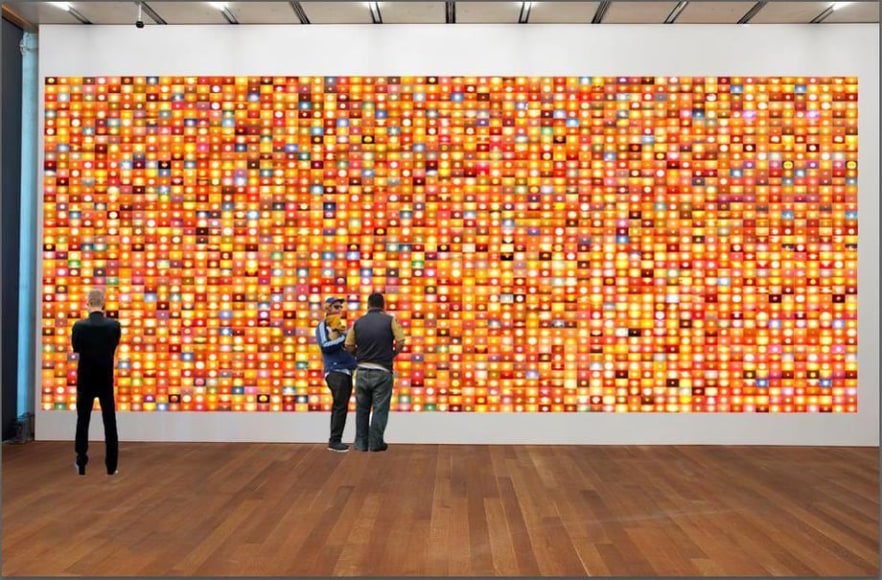
Penelope Umbrico offers a radical reinterpretation of everyday consumer and vernacular images. Umbrico works “within the virtual world of consumer marketing and social media, traveling through the relentless flow of seductive images, objects, and information that surrounds us, searching for decisive moments—but in these worlds, decisive moments are cultural absurdities.”
Umbrico finds these moments in the pages of consumer product mail-order catalogs, travel and leisure brochures; and websites like Craigslist, EBay, and Flickr. Identifying image typologies—candy-colored horizons and sunsets, books used as props—brings the farcical, surreal nature of consumerism to new light.
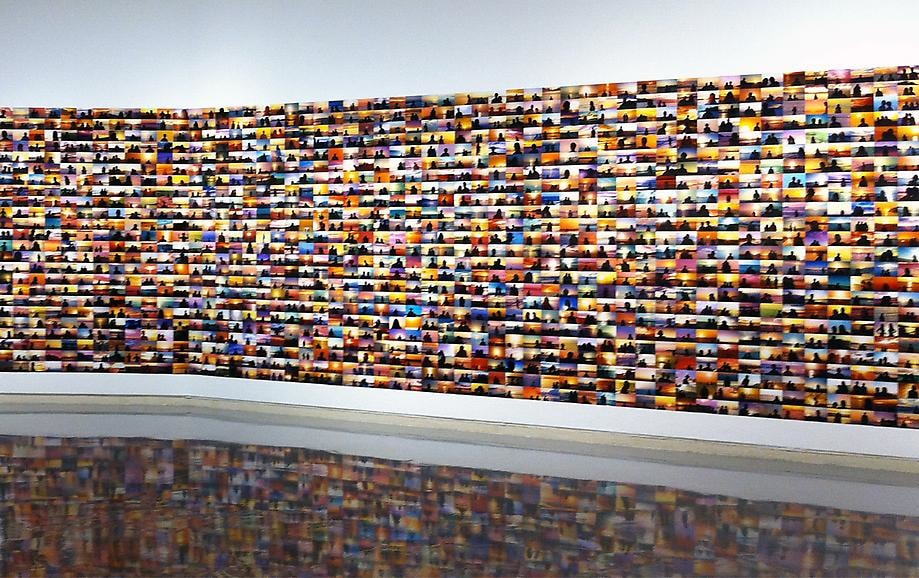
Mandy Barker: Mandy Barker is an international award-winning photographic artist whose work involving marine plastic debris for 15 years, has received global recognition. Working with scientists she aims to raise awareness about plastic pollution in the world’s oceans, highlighting the harmful affect on marine life, climate change and ultimately ourselves – leading the viewer to take action.
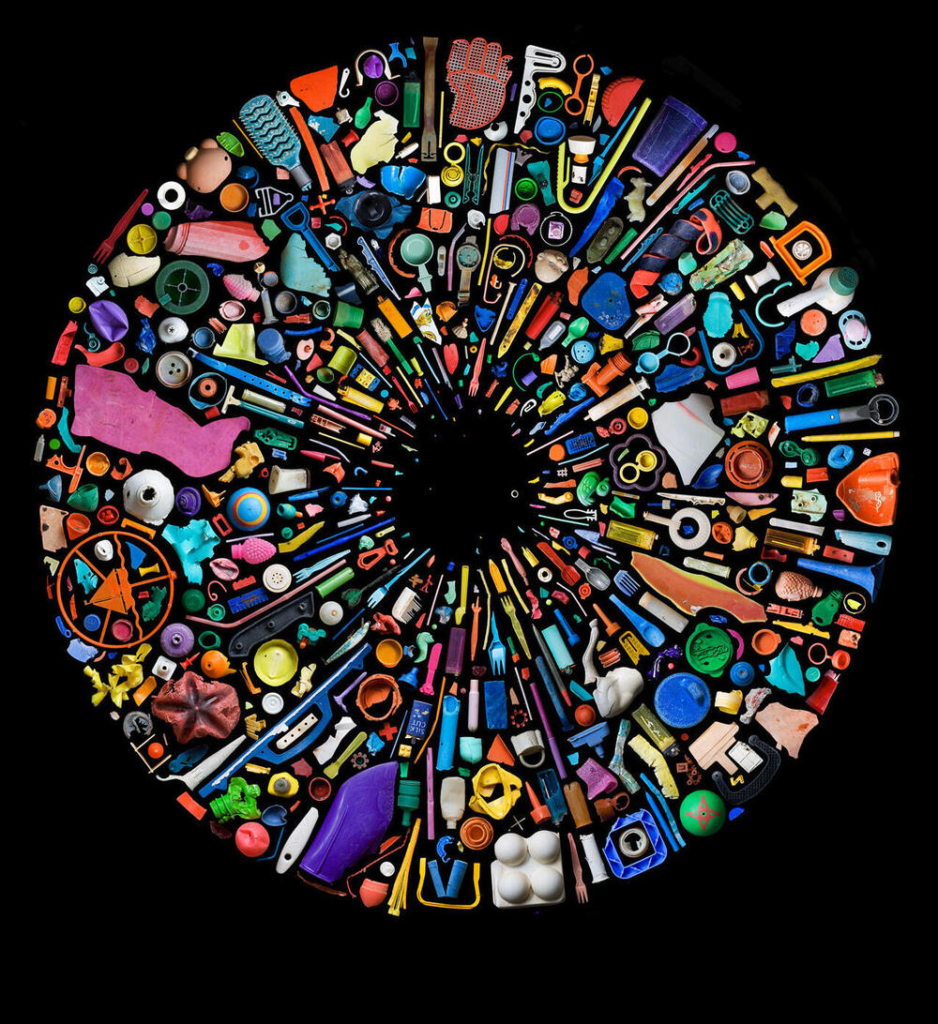


The series PENALTY aims to create awareness about the issue of marine pollution by focusing attention on the football as a single plastic object and global symbol that could reach an international audience. The project involved the collaboration with members of the public from around the world after a call via social media for people to collect and post footballs they found in the sea or on the shoreline.
In total 992 marine debris balls were recovered from the world’s oceans in just 4 months. 769 footballs and pieces of, with 223 other types of balls were collected from 41 different countries and islands and from 144 different beaches, by 89 members of the public.

BEYOND DRIFTING: IMPERFECTLY KNOWN ANIMALS: Plankton form a diverse group of microscopic marine organisms living in the water column, not able to swim against the current they exist in a drifting, floating state. In this series unique ‘specimens’ of this animal species relate to the pioneering discoveries made by John Vaughan Thompson in Cobh, Cork harbour during the 1800’s.
Presented as microscopic samples, objects of marine plastic debris, recovered from the same location, mimic Thompson’s early scientific discoveries of plankton. The work represents the degradation and contamination of plastic particles in the natural environment, by creating the perception of past scientific studies, when organisms where free from plastic. Enveloping black space evokes the deep oceans beneath. Presenting new ‘specimens’ created from recovered debris, serves as a metaphor to the ubiquity of plastic and the anthropocene, encapsulating in miniature the much larger problem of an imperfect world.

“In 2012, I found a piece of material in a rock pool that changed my life. Mistaking this moving piece of cloth for seaweed, started the recovery of synthetic clothing from around the coastline of Britain for the next ten years”.
PHOTOGRAPHS OF BRITISH ALGAE: CYANOTYPE IMPERFECTIONS: Two hundred and two ‘specimens’ of clothing and garments recovered from one hundred and twenty-one beaches mimic different species of marine algae, with the intention to raise awareness about the over consumption of synthetic plastic clothing also referred to as ‘fast fashion’, which is currently having the greatest impact on global climate change.
After seeing an original copy of the book, ‘Photographs of British Algae, Volume 1’ by Anna Atkins, at The Royal Society in London, Barker was captivated by its detail and significance, and for the way it changed how we looked at science in 1800’s, but more importantly for the possibility to re-create similar work that could engage how we look at science in connection with a present-day critical issue.
Alexander Mourant – born in Jersey, lives in London
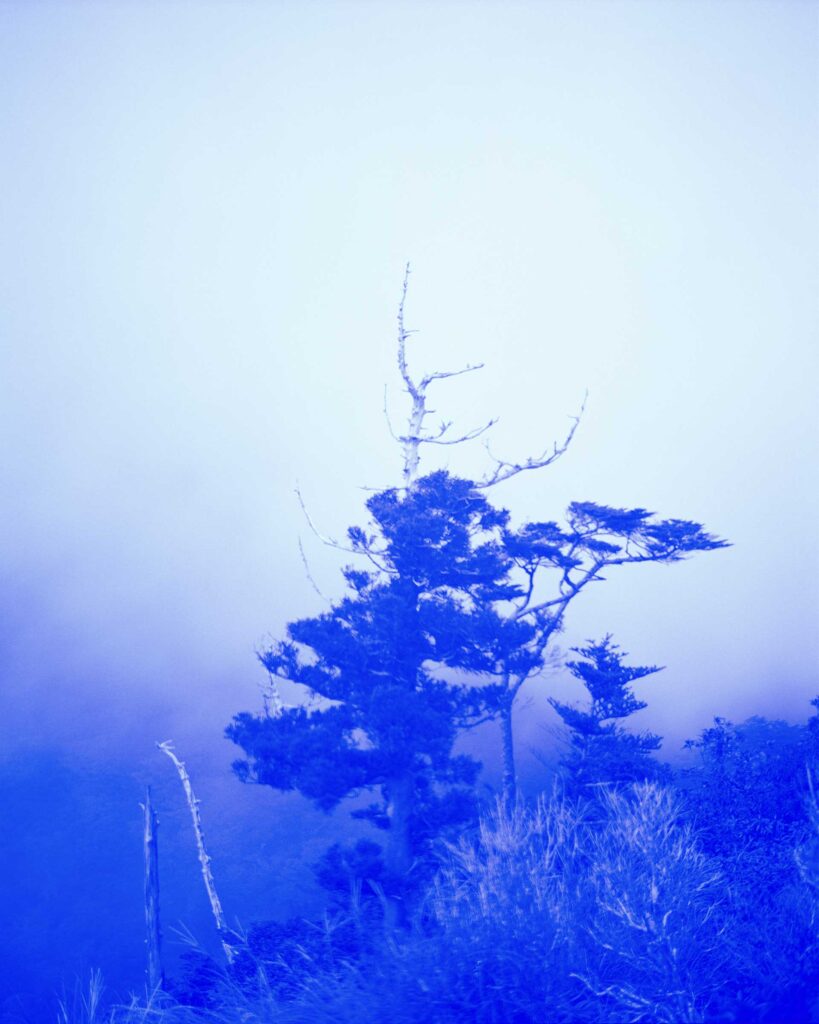
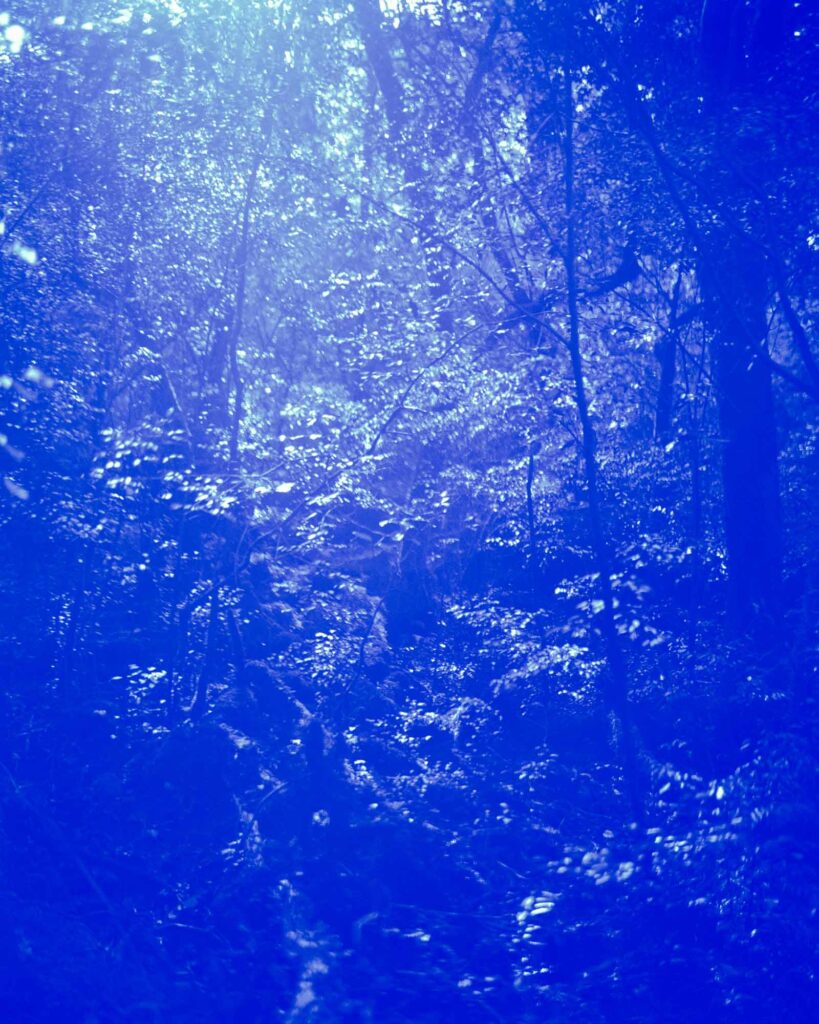
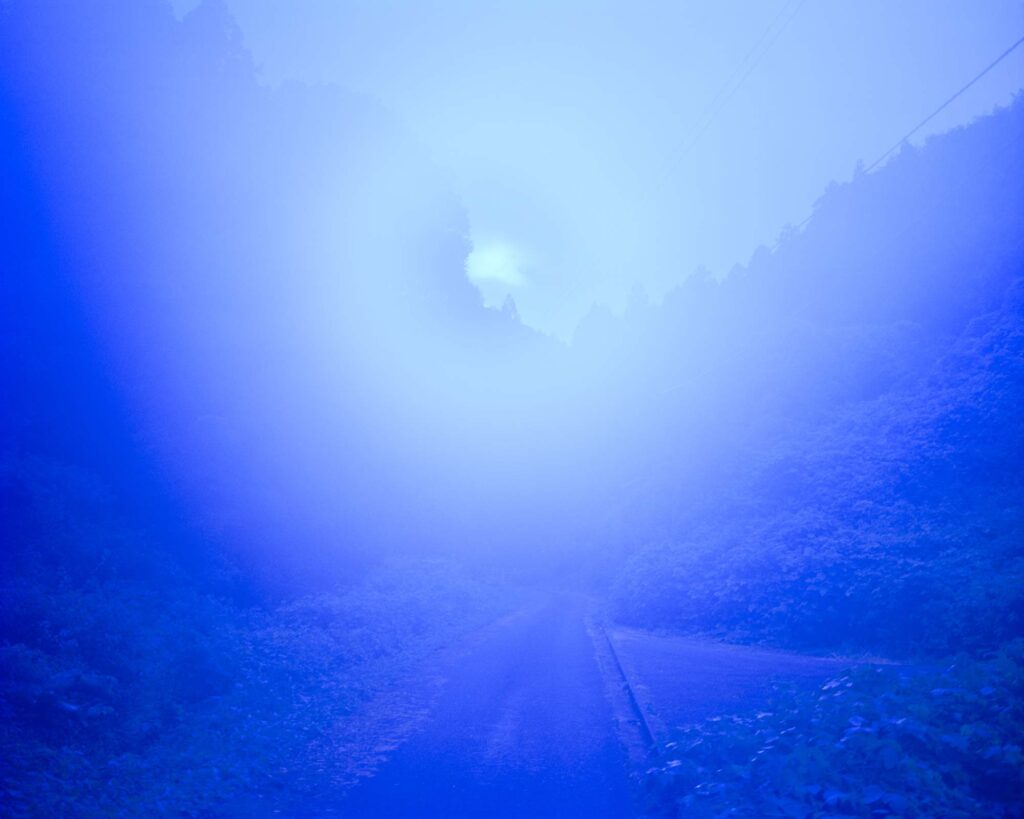
Aomori: “It is peculiar how forests have such an affect on us,” observes Jersey-born photographer Alexander Mourant of his latest project Aomori, which was shot in Japan’s ancestral forests. “As temporal dimensions crumble, objectivity leaves us. We are found in a still, oneiric state, contemplating our own accumulation of experience.”
“Aomori, meaning ‘blue forest’ in Japanese, is a synthesis of two existential ideas – the forest and the nature of blue,” explains Mourant. “Together they create a place of high intensity, a place which questions our relationship to time, colour and self.”
“Aomori addresses the most intangible colour, blue,” Mourant says. “For an artist, an intimate investigation of one individual subject can lead to limitless fields on intertwining narratives and unseen connections. There is so much in the colour blue.”
Read more here in an interview with Mourant.
Five Sketches Running for Two Hundred and Ten Seconds or Five Furrows, 2020
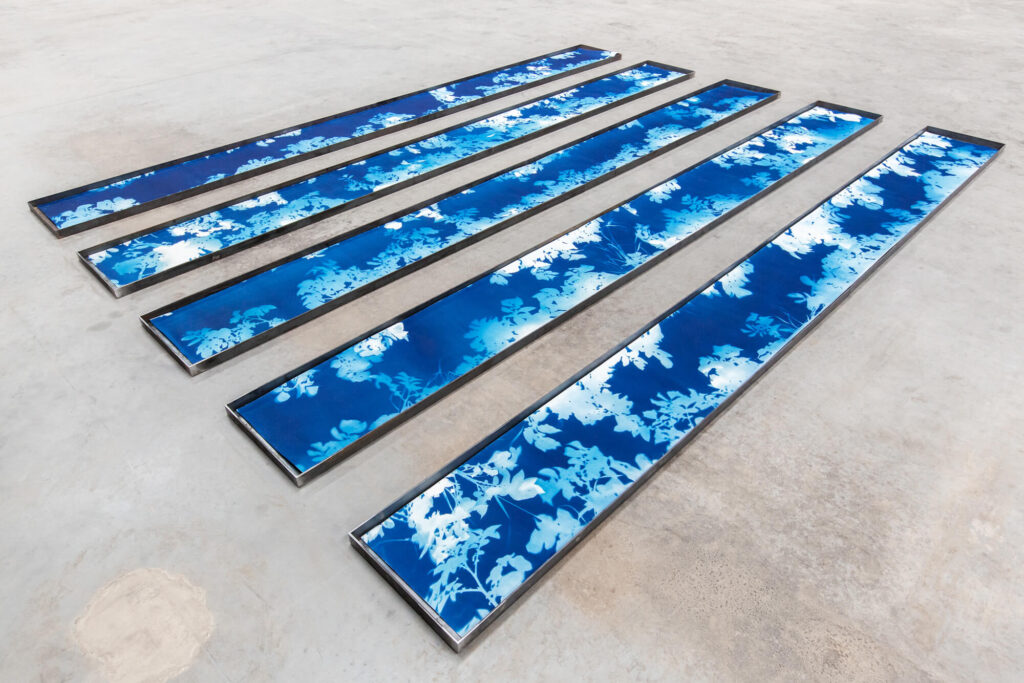
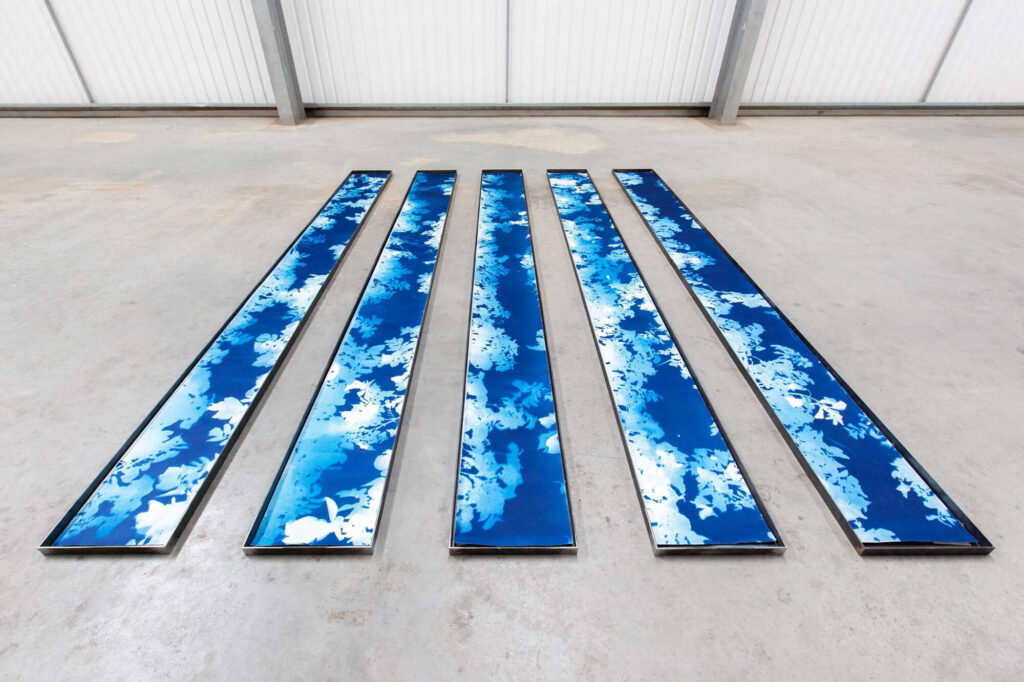
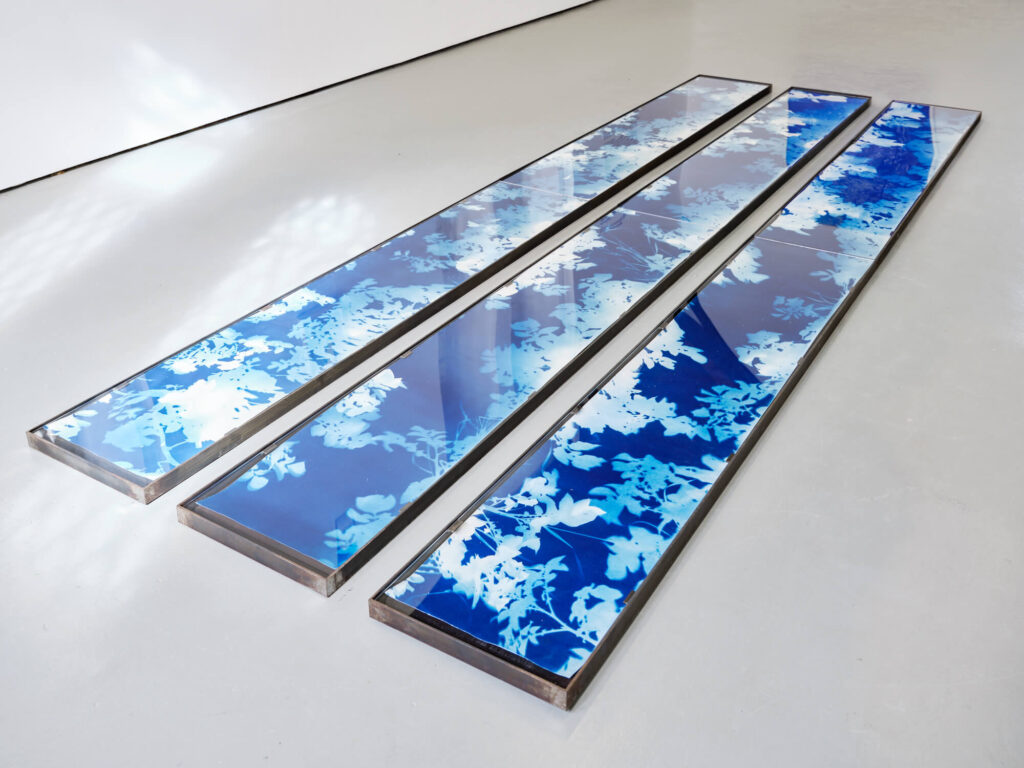
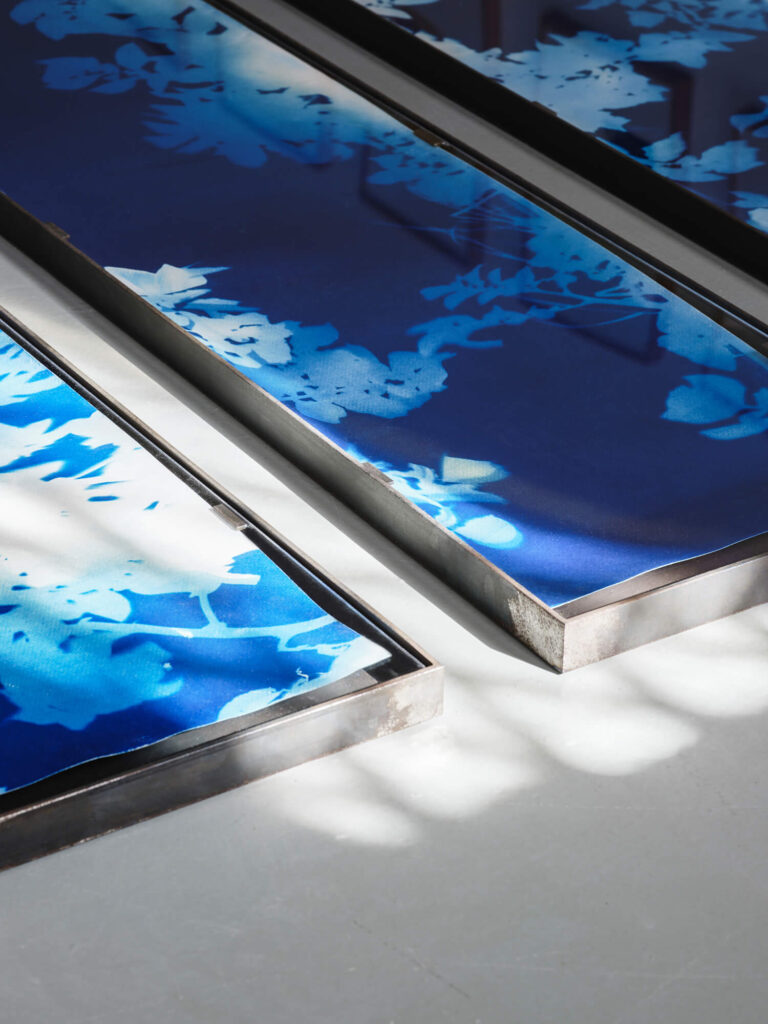
5: 398cm x 39cm prints
5: 400cm x 40cm x 5cm steel trays
Artwork scale: 400cm x 260cm
Cyanotype, photogram, watercolour paper
Unique
Anna Atkins was an English botanist and photographer. She is often considered the first person to publish a book illustrated with photographic images, British Algae. Photographs of British Algae was published in fascicles beginning in 1843 and is a landmark in the history of photography. Using specimens she collected herself or received from other amateur scientists, Atkins made the plates by placing wet algae directly on light-sensitized paper and exposing the paper to sunlight. Her nineteenth-century cyanotypes used light exposure and a simple chemical process to create impressively detailed blueprints of botanical specimens.



See how contemporary artist, Tom Pope has responded to Anna Atkins plant studies and work with cyanotypes, uncovering her family links with plantation economy in the Caribbean and slave ownership during British colonial history in his ongoing research and performative work, Almost Nothing But Blue Ground


Wolfgang Tillmans is a German photographer. His artistic work is based on an irrepressible curiosity, intensive preparatory research and continual engagement with the technical and aesthetic potential of the medium of photography. His visual language is characterized by a close observation that opens up a deeply humane approach to our surroundings. Familiarity and empathy, friendship, community and closeness can be seen and felt in his pictures.


Tillmans’ is also a prolific photobook maker and has made many (40+). One of his most celebrated is Concorde which was published by Walther König, Cologne. The photographs were taken at a number of sites in and around London, including close to the perimeter fence at Heathrow airport. consists of images of the Concorde flying over Tillmann’s home in west London. Study his series here at Tate Modern which has also been exhibited in various museums as an installation.



